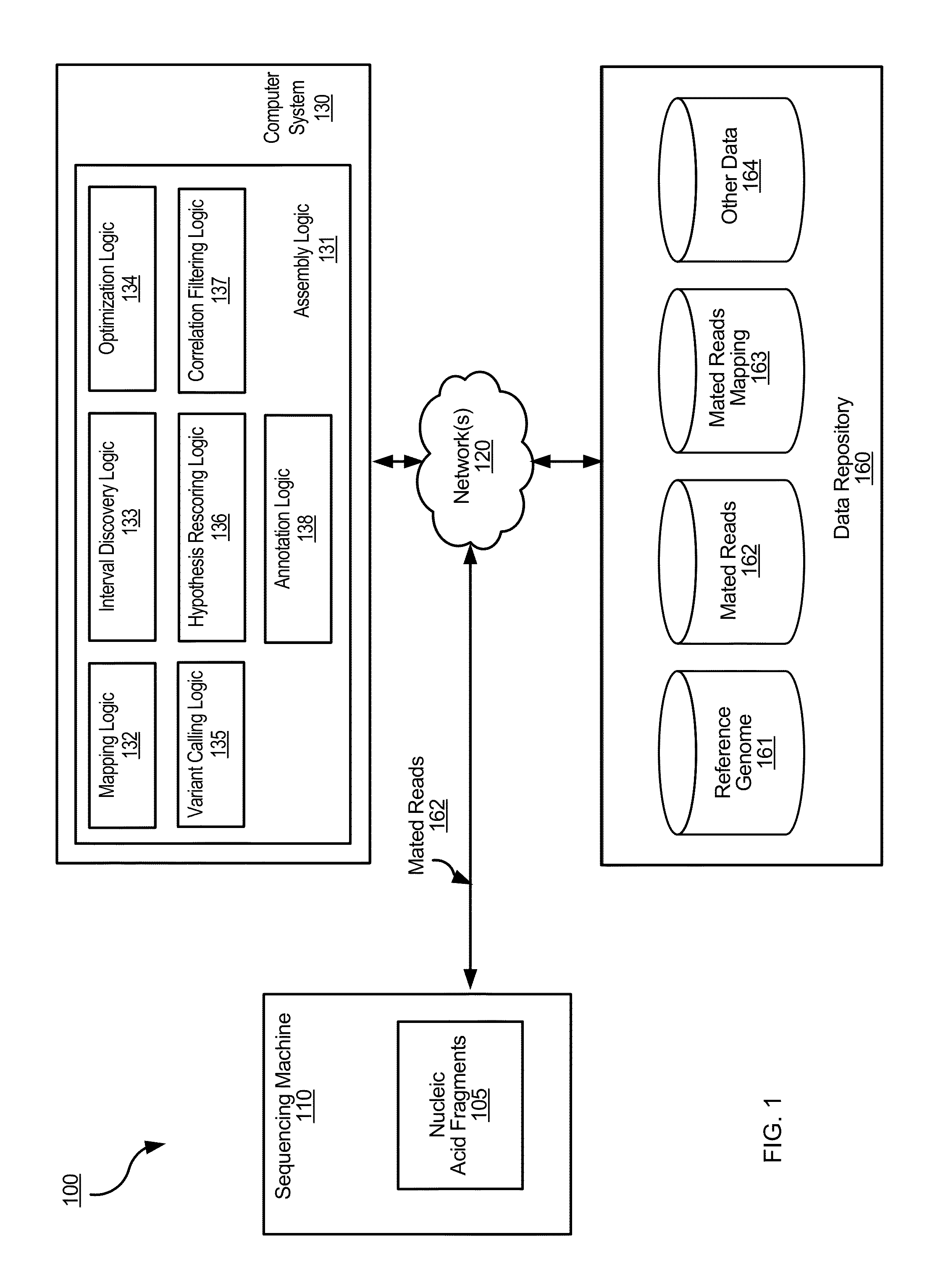Determining variants in genome of a heterogeneous sample
a technology of genome and variants, applied in the field of determining variants in the genome of a heterogeneous sample, can solve the problems of not being able to determine all the mutations in the genome of the sample, and achieve the effect of accurate determination
- Summary
- Abstract
- Description
- Claims
- Application Information
AI Technical Summary
Benefits of technology
Problems solved by technology
Method used
Image
Examples
Embodiment Construction
[0043]Cancer samples are complex. For example, different cells of a tumor sample can have different genomes. These samples often exhibit such heterogeneity in the genomes due to contamination with normal DNA and / or multiple branches in the tumor evolution. When such different cells are analyzed within a same sequencing experiment, the measured copy number of the alleles at a particular locus can vary. For example, the percentage (allele fraction) of DNA having a particular allele could have any value between 0% and 100%. Thus, a significant challenge in studying cancer genomes is being able to detect variants present in a small fraction of the cells in a cancer sample.
[0044]To address this challenge, the process for determining the genome of the sample in a particular region can explicitly allow for the allele fraction to vary between a range of values (e.g., any value between 0% and 100%). This determined genome of the sample can effectively be a composite of the genomes of the var...
PUM
 Login to View More
Login to View More Abstract
Description
Claims
Application Information
 Login to View More
Login to View More - R&D
- Intellectual Property
- Life Sciences
- Materials
- Tech Scout
- Unparalleled Data Quality
- Higher Quality Content
- 60% Fewer Hallucinations
Browse by: Latest US Patents, China's latest patents, Technical Efficacy Thesaurus, Application Domain, Technology Topic, Popular Technical Reports.
© 2025 PatSnap. All rights reserved.Legal|Privacy policy|Modern Slavery Act Transparency Statement|Sitemap|About US| Contact US: help@patsnap.com



